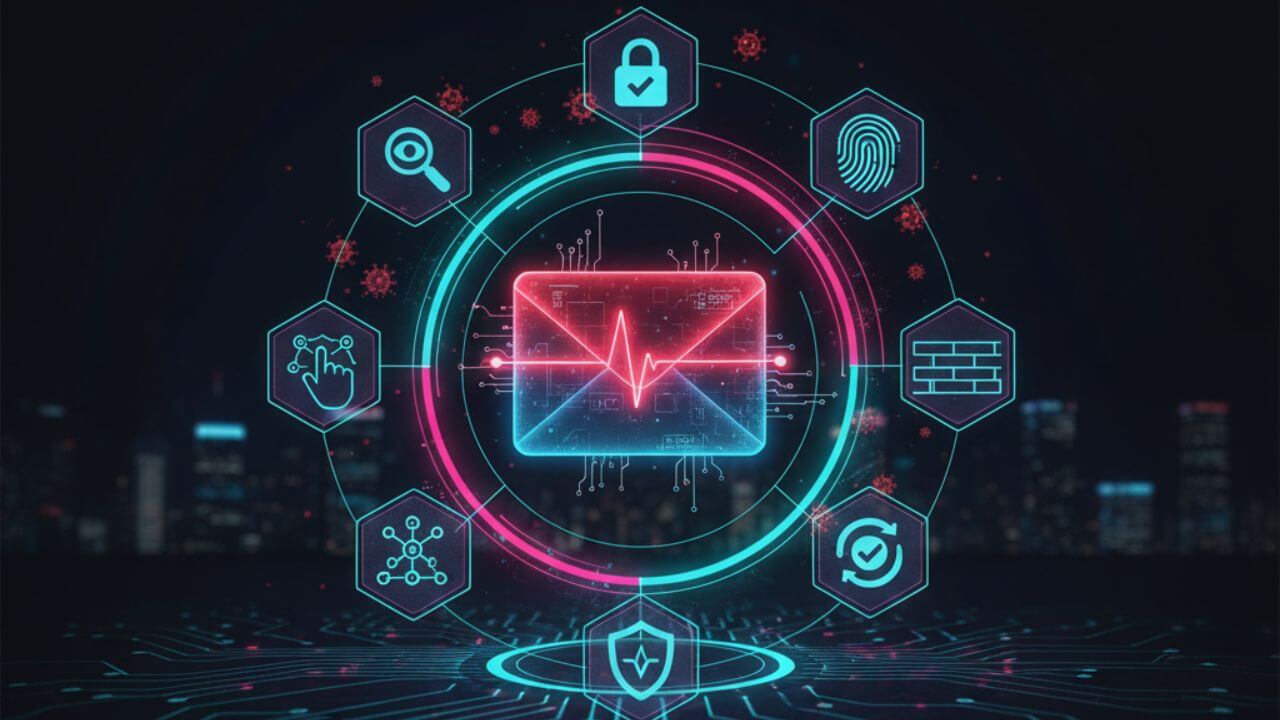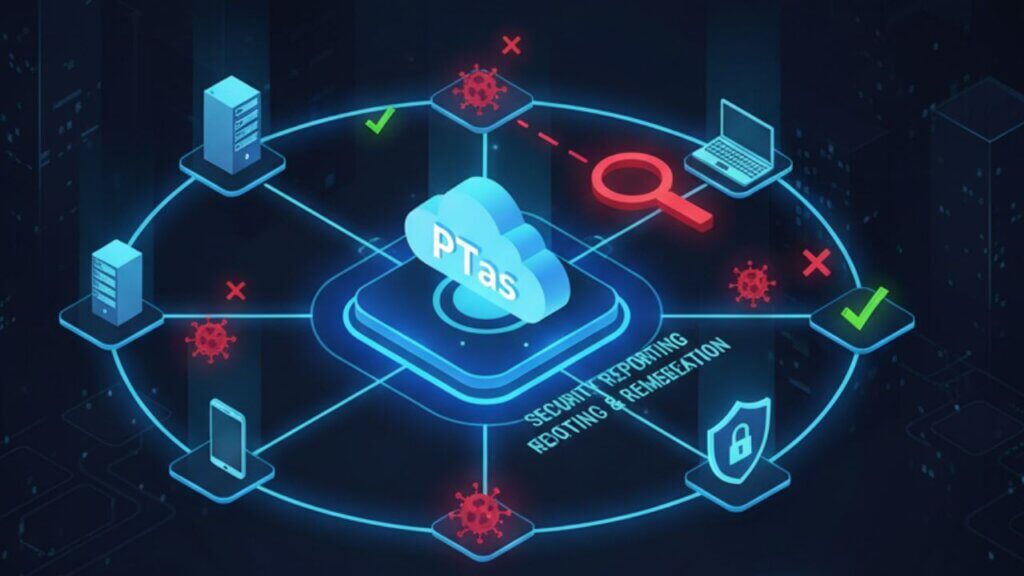Phishing attacks have quietly evolved into something far more convincing than the clumsy scams most people remember. Messages that once contained obvious spelling errors, mismatched signatures, or strange requests now appear polished, natural, and tailored to the reader. Employees who previously felt confident identifying suspicious emails are suddenly second-guessing themselves and for good reason. Attackers have learned to imitate everyday communication with unsettling accuracy.

Table of Content
The realism of these messages has raised the stakes for organizations. A single deceptive email can trigger financial loss, account breaches, and unauthorized access to critical systems. Understanding how these new attacks operate and how to detect them has become essential for every team, from finance departments to senior leadership.
Why AI-Powered Phishing Emails Are Harder to Recognize
These new attacks stand apart because they remove the “tells” that employees have been trained to watch for over the years. Instead of relying on mass-produced templates, attackers generate unique messages that align with company culture, team structure, and even individual communication habits.
What makes them particularly effective:
- They learn from public online content, corporate websites, social media posts, and job descriptions.
- They mimic internal tone and writing style far better than older phishing attempts.
- They can include references to recent meetings, projects, and announcements pulled from publicly accessible data.
This shift makes traditional detection methods scanning for bad grammar or odd formatting far less useful than they used to be.
Hidden Language Patterns Reveal More Than You Think
Even when a message appears natural, subtle linguistic inconsistencies often appear when examined closely. These clues tend to be too small for casual readers but noticeable when you know what to look for.
A few common signs include:
- Uniform sentence rhythm: Natural writing contains varied pacing. These messages often feel too evenly structured.
- Consistent “safe tone”: Attackers avoid strong emotional cues to avoid detection, creating messages that feel slightly sterile.
- Overuse of neutral vocabulary: Real colleagues tend to use familiar phrases, but these messages rely on generic business language.
Some cybersecurity teams use linguistic fingerprinting, a technique that compares writing habits from legitimate internal communication with unusual patterns in incoming emails. While your employees don’t need specialized tools, simply being aware that writing “smoothness” can be suspicious is an important step forward.
The Sender Isn’t Always Who They Appear to Be
The display name in an email is the easiest part for attackers to forge. What matters is everything behind it.
Before trusting a message, always check:
- The full email address: Unexpected subdomains or unusual domain extensions are red flags.
- The “Reply-To” address: This frequently leads to a completely different mailbox controlled by attackers.
- Domain age: Newly registered domains often just days old are frequently used for short phishing campaigns.
- Authentication alignment: SPF, DKIM, and DMARC records protect your organization from domain spoofing. If these records fail, the message should not be trusted.
Encourage employees to look beyond the name and examine where the message actually comes from. Most suspicious emails reveal themselves the moment the full address is inspected.
Pay Attention to Behavioral Context, Not Just the Message
Attackers can imitate writing tone, but they struggle to replicate real communication habits. The fastest way to catch a suspicious email is by noticing disruptions in normal behavior.
Ask these questions:
- Would this person normally make this type of request?
- Is the message unusually urgent, especially regarding payments, credentials, or confidential files?
- Is this related to a conversation you were never part of?
- Is the request outside regular working hours or from someone who rarely emails directly?
Organizations that use behavioral monitoring tools often spot phishing attempts early because the messages don’t match the sender’s historical patterns. However, even without specialized tools, employees can rely on common sense if the request feels unusual, it deserves scrutiny.
Subtle Metadata Clues Can Expose Fraud
The content may appear authentic, but the technical layers behind the message usually reveal inconsistencies.
Areas to inspect:
- Link destinations: Hovering over a hyperlink often shows a completely different domain than what appears in the text.
- Time zone discrepancies: Emails sent at unrealistic hours for local staff may indicate foreign origin.
- Mismatched routing information: Unknown relay servers in the header chain can signal unauthorized delivery paths.
- Attachment types: Files requiring macros, encrypted ZIP archives, or “urgent documents” you didn’t request should be treated with caution.
Most of these checks take only seconds yet dramatically increase your ability to recognize harmful messages.
Use Modern Defense Tools Designed for New Threats
Traditional email filters were built for predictable threats. Today’s deceptive emails require adaptive systems that analyze more than subject lines or keywords.
Organizations are turning to tools that examine:
- Writing style anomalies
- Sender-recipient relationship history
- Domain reputation scoring
- Unusual behavioral patterns
- Micro-timing and routing inconsistencies
These solutions don’t replace human judgment, they enhance it. When combined with security awareness training, they reduce risk significantly.
Encourage a Verification-First Culture
Technology helps, but the most reliable defense is a workforce that pauses before acting. Attackers rely on urgency, secrecy, and fear to pressure employees into skipping verification.
Strengthen your team by encouraging habits such as:
- Verifying any unusual request through a separate communication channel
- Reporting emails that feel “off,” even if they aren’t obviously malicious
- Asking managers or IT before approving sudden financial or credential-related requests
- Keeping an internal culture where double-checking is valued, not criticized
When people feel comfortable questioning suspicious messages, attackers lose their advantage.
What Most Competitors Don’t Explain: Hidden Technical Signals
Here’s where your organization can gain a serious advantage: deeper indicators that many articles never mention.
- Character Distribution Patterns: Generated messages often show mathematical uniformity in punctuation spacing and sentence lengths. Real writing has natural irregularities. Filters trained to detect these patterns can identify fraudulent messages that seem perfectly written.
- Repeated Encoding Signatures: Many phishing kits reuse the same email encoding format or MIME structure. Security tools can learn to flag these even when the message content changes.
- Behavioral Relationship Mapping: Advanced systems map how employees normally communicate. If someone receives a direct request from a colleague they’ve never emailed before, the system automatically flags the interaction.
These techniques give companies a measurable edge especially those targeted by highly customized attacks.
“Don’t Wait for a Breach” (Urgency + Value)
Cybercriminals are evolving fast, and organizations without proper defenses remain easy targets.
Take the first step toward securing your systems, training your team, and reducing your risk exposure.
Get Expert Cybersecurity Support
Protecting Your Organization: The Next Steps
To strengthen your resilience:
- Enforce strict email authentication policies.
- Deploy modern threat-detection tools that examine behavior, tone, and relationships.
- Train employees regularly with real examples that mirror current threat trends.
- Maintain a clear incident-reporting channel and rapid response procedure.
- Update phishing simulation exercises to include lifelike, scenario-based messages.
When your workforce and your security tools evolve together, the impact of deceptive emails decreases dramatically.
Conclusion
The rise of AI-powered phishing emails has changed how organizations must defend themselves. The most dangerous messages are no longer the most obvious; they’re the ones that blend seamlessly into everyday communication. By recognizing subtle linguistic cues, validating senders properly, checking underlying metadata, and using modern defensive tools, organizations can stay ahead of threats designed to exploit trust.
Every cautious moment, every second spent verifying a request, and every report submitted to your security team strengthens your overall protection. The attacks may be smarter, but a well-trained and aware organization can stay a step ahead.
Want to Stay Ahead of Attackers? Read These Next:
- DevSecOps Best Practices: Integrating Security Early in Your CI/CD Pipeline
- 5 Cloud Misconfigurations That Lead to Data Breaches
- How Can Ethical Hacking Training Elevate Your Internal Cybersecurity?
- Top 5 Fileless Remote Access Trojans in 2025
- Top 5 IoT Remote Access Trojans Crippling Devices in 2025
- Top 5 Web-Based Remote Access Trojans That Are Dominating 2025
Why Businesses Trust SecureMyOrg for Comprehensive Network Security
At SecureMyOrg, we uncover and fix all possible security vulnerabilities of mobile and web, while providing solutions to mitigate risks. We are trusted by renowned companies like Yahoo, Gojek and Rippling, and with 100% client satisfaction, you’re in safe hands!







Some of the things people reach out to us for –
- Building their cybersecurity program from scratch – setting up cloud security using cost-effective tools, SIEM for alert monitoring, building policies for the company
- Vulnerability Assessment and Penetration Testing ( VAPT ) – We have certified professionals, with certifications like OSCP, CREST – CPSA & CRT, CKA and CKS
- DevSecOps consulting
- Red Teaming activity
- Regular security audits, before product release
- Full time security engineers.






